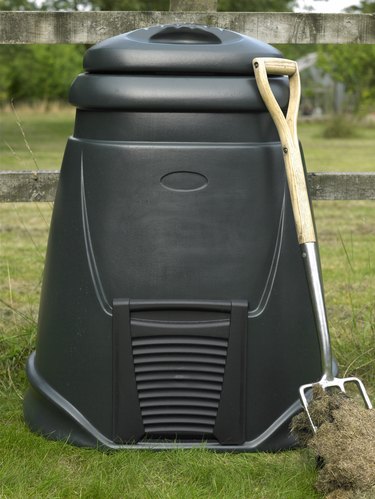
Manure is commonly used as an organic soil amendment to improve water- and nutrient-holding capacity in sandy soils and improve drainage in soils with low permeability. It adds nitrogen, phosphorous and potassium to soil and is a food source for bacteria that break down organic materials so they can be utilized by plants. Many factors affect the amount of manure to apply to your topsoil. Start with a few general guidelines, and experiment over time to find the right mix for your garden.
Manure Types
Video of the Day
The amount of nutrients in manure varies based on the type of animal and whether the manure is fresh, dried commercially or contains straw. For example, fresh cow manure that does not contain straw has approximately 11 percent nitrogen, 4 percent phosphorous and 10 percent potassium. Dried commercial cow manure has much higher values at approximately 42 percent nitrogen, 42 percent phosphorous and 61 percent potassium. Fresh chicken manure, from a hen, contains approximately 22 percent nitrogen, 22 percent phosphorous and 10 percent potassium, and its dried commercial version contains approximately 31 percent nitrogen, 31 percent phosphorous and 40 percent potassium. Manure from meat-eating animals and pets should not be used because it could contain parasites.
Video of the Day
Fresh Manure
Fresh manure used in the garden carries a risk of tainting your vegetables with bacteria like Salmonella. To reduce the risk of contamination, apply fresh manure to the soil at least four months prior to harvest, or in regions that have cold winters, apply it in the fall and work it into the soil in the spring; wait one month before planting to allow microbial activity to subside. Microbes can disrupt seed germination.
Aged Vs. Composted Manure
Manure that has been aged for at least six months is safer to use than fresh manure. Keep it in a pile, turn it periodically, and allow rain to leach out ammonia and salts. Ammonia can burn plants, and salts can can build up in the soil. Putting manure through the composting process, where it reaches at least 145 degrees Fahrenheit, will kill most weed seeds. Seeds in aged manure are still viable and can spawn weeds in the garden.
Application Rate
Because different manures contain varying amounts of nutrients, it is difficult to pinpoint an exact amount for each application. Colorado State University Extension recommends a general application rate of a 1-inch layer of any soil amendment that contains manure. Apply it to the surface of new garden beds that will be planted with ornamentals or vegetable. Each year thereafter, apply another 1-inch layer. After each application work the manure amendment at least 6 inches into the topsoil. This will put the manure where roots can utilize it, and this will keep it from running off into nearby bodies of water, polluting them. Side-dress vegetable rows with aged manure during the growing season.